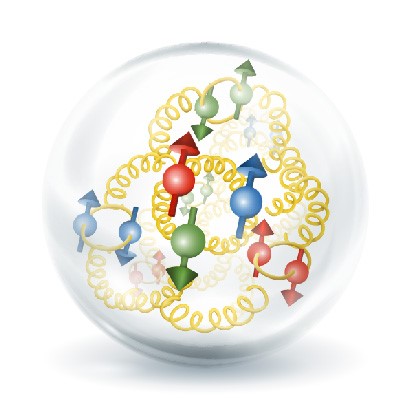Contact Us
EIC2@JLab Director:
Douglas Higinbotham
(757) 269-7851
Media Contact:
Lauren Hansen
Communications Manager
(757) 269-7689
lhansen@jlab.org
https://www.jlab.org/pressroom
EIC2@JLab Director:
Douglas Higinbotham
(757) 269-7851
Media Contact:
Lauren Hansen
Communications Manager
(757) 269-7689
lhansen@jlab.org
https://www.jlab.org/pressroom
The Electron-Ion Collider Center at Jefferson Lab (EIC2@JLab) is an organization to advance and promote the science program at a future electron-ion collider (EIC) facility. Particular emphasis is on the close connection of EIC science to the current Jefferson Lab 12 GeV CEBAF science program.
EIC2@JLab consolidates and connects the EIC physics and detector development activities in and around Jefferson Lab. These activities include:
Further, EIC2 coordinates with the following activities:
In addition, EIC2 establishes the following new activities:
The Thomas Jefferson National Accelerator Facility (Jefferson Lab) is located at 12000 Jefferson Avenue in Newport News, Virginia.
The Electron-Ion Collider Center at Jefferson Lab (EIC2@JLab) is an organization to advance and promote the science program at a future electron-ion collider (EIC) facility. Particular emphasis is on the close connection of EIC science to the current Jefferson Lab 12 GeV CEBAF science program.
 At the heart of the atom are protons and neutrons. The characteristics and interactions of neutrons and protons, singly and collectively in the nuclei are responsible for how our cosmos developed and how our sun provides the heat that sustains the eco-system on earth.
At the heart of the atom are protons and neutrons. The characteristics and interactions of neutrons and protons, singly and collectively in the nuclei are responsible for how our cosmos developed and how our sun provides the heat that sustains the eco-system on earth.
While we have known for 50 years that protons and neutrons are made of quarks and gluons (represented in the figure to the left as spheres with arrows and springs, respectively), we are just beginning to learn how to image the structure and interactions inside protons and neutrons that are at the femto-scale, a million times smaller than the nano-scale of modern micro-electronics.
Jefferson Lab has been at the forefront of this research; the current 12 GeV CEBAF program at JLab is world-leading in this science. The proposed Electron-Ion Collider will be the ultimate instrument for this new science: nuclear femtography.
More detailed information about the Electron-Ion Collider can be found at the following links:
NEWS:
JLab News: Nuclear Science Advisory Committee Issues Plan for U.S. Nuclear Physics Research
APPLICATIONS ARE OPEN For 2024
The EIC Center at Jefferson Lab, EIC2, is pleased to announce opportunities for graduate and post-doctoral fellowships.
These fellowships will be awarded to fund coming to Jefferson Lab to research a special topic. The current areas of research include theory, simulations, detectors, and computing as they relate to the EIC, Positrons or the proposed JLab 22 GeV upgrade. Each fellowship will provide travel to Jefferson Lab, housing and a per diem for a typical stay of ten weeks at the lab.
Eligible students must be enrolled full-time in a relevant doctoral program. Postdocs must have a full-time position with a relevant university or laboratory research program. . The awardees may not concurrently hold another major full-time fellowship or internship. The award is limited to once a year though awardees can reapply for an additional year.
To apply, a research plan must be provided according to the guidance provided below. The plan should be written by the applicant together with their university or laboratory advisor. The plan should contain clear goals and deliverable to be accomplished by the end of the Fellowship visit. Working with a Jefferson Lab staff member is encouraged.
The applications will be evaluated on an ongoing basis according to the following criteria:
The following application will be reviewed on an rolling basis.
The application materials must be sent by email to Patricia Cheeseboro <pcheese@jlab.org>.
Inquiries about the fellowship program should be directed to: Douglas Higinbotham (doug@jlab.org)
Press releases about past winners of the program can be found at the following links: